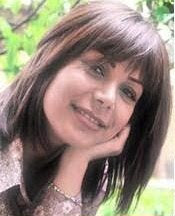Mistaken as an Iranian Martyr, Then Hounded
By Souad Mekhennet
 |
| Zahra Soltani |
FRANKFURT, Germany — Zahra Soltani, whom everyone calls Neda, will never forget the day she saw her death announced on television, accompanied by the picture she had posted on her Facebook page.
“They said that I was killed during the protests against the presidential elections,” she said, shaking her head.
In fact, it was another Iranian woman with a similar appearance and name, Neda Agha-Soltan, who was shot and killed during a demonstration in Tehran in June 2009. Her death was captured on video and posted on the Internet, becoming a symbol of the fight against the repressive government of President Mahmoud Ahmadinejad.
Soon, Soltani found herself swept up in the government’s efforts to counter any suggestion that its security forces had been involved in the shooting — and to deny that the woman in the video had died. Iranian intelligence officials, Soltani said, pressured her to come forward to show that she was alive and denounce the shooting as faked, and threatened her when she did not comply.
advertisement:Before the demonstration, Sol-tani, a 33-year-old English-literature teacher at a campus of Islamic Azad University who had not been active in politics, had been preparing for a presentation at a conference in Greece. Just days after the protest march, she fled Iran, ending up as a refugee in Germany, where she was granted poolitical asylum in March after the authorities investigated her story.
“I never planned to leave my country and my family, but I was forced to,” Soltani said. She consented to an interview, her first with an English-language media organization, on the condition that some details about her new life be concealed because she fears the Iranian security services.
The upheaval in Soltani’s life began June 20, 2009, when a video appeared on YouTube showing a young dark-haired woman who was shot during the demonstration. As she lay dying, with blood running from her mouth, an older man (some reports said it was her father, others said her music teacher) shouted the name “Neda.”
Journalists worldwide tried to find out who the dying woman was; the video image of her was not entirely clear, and she was wearing a veil. At some point she was identified as Neda Agha-Soltan, a 26-year-old student at the Tehran campus of Islamic Azad University, the school with which Soltani was affiliated.
 |
| Neda Soltan |
“I was very surprised when I opened my e-mail account on June 21 and found over 60 people from all over the world who had added me on Facebook” as a friend, Soltani said. That number kept growing, puzzling Soltani and her mother, until they saw her picture on television, cast as a victim of Iranian security forces.
She said she and her friends started to contact media outlets to tell them that she was not the woman in the YouTube video. Even when the family of the slain woman released photos of her on June 23, Soltani’s pictures were still used in news reports.
By June 24, the Iranian intelligence service started looking for her, Soltani said. Panicked, she contacted Amnesty International in London. “She was very afraid and scared, and did not know what to do,” said Ann Harrison, an Iran researcher for Amnesty.
Agents from the intelligence service picked her up from her home outside Tehran and took her for questioning, Soltani said.
“They asked me to say on camera that I was still alive, and that the Greek Embassy in Tehran had leaked my picture to the media, and that the story was wrong,” Soltani said. (Her Facebook picture was identical to the one that she had given to the embassy weeks before in seeking a visa to the academic conference.)
“They wanted to use me to denounce Neda’s death,” she said. They also wanted her to blame conspirators from the West for the episode.
Soltani said some of the men, who were armed, threatened her. “They said it would be better for my safety if I did what they wanted me to do,” she said.
On July 1, the intelligence service confronted Soltani about the phone calls she had made to Western countries — to media outlets, friends she had enlisted for help, and Amnesty International — and accused her of spying, she said.
The next day, Soltani fled Iran.
“All I had was my rucksack, my laptop and a small handbag,” she said. She stayed in Turkey for nine days, then traveled to Greece and on to Germany, where she arrived in mid-July 2009.
A spokesman for the Iranian Embassy in Germany disputed Soltani’s story, but declined to comment further.
Soltani, who is living in a town outside Frankfurt, is unemployed and looking for work. She said she missed her family and her life as a teacher.
“I am very homesick,” she said. “... Both sides have destroyed my life — the Western media and the Iranian intelligence. But I still have the hope that at least the media will realize what they have done.”
Original article can be found here





























0 Comments - Share Yours!:
Post a Comment